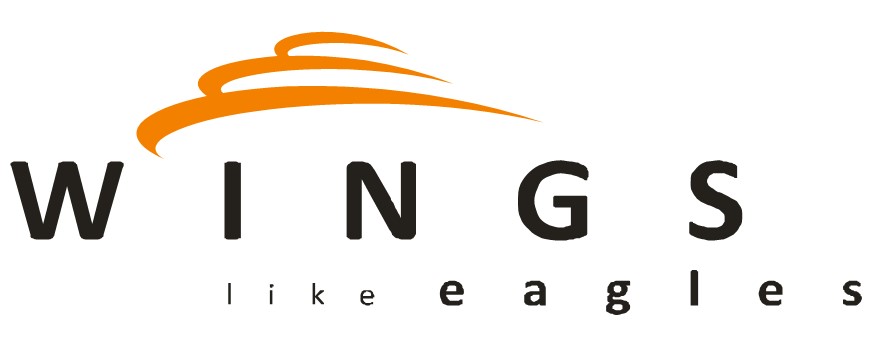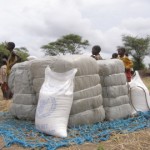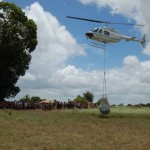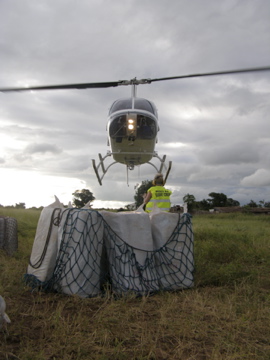Cargo flights in disasters
After life-saving, cargo flights are our next priority. To us they are key to disaster response. They keep people alive.
Wings wants to get the right aid to the right people. It is our second priority. After life-saving.
The cluster system of disaster management
The UN divides disaster response into 9 clusters. But not all disasters require all the clusters.
Each cluster has a lead agency and may have many partners. The partners may be specialised NGOs. The partners may supply specialist items or expertise. Each cluster may bid for its own cargo flights.
But cargo flights support any or all of the clusters.
Ideally a multi cluster approach is used for each flight. That way, each of the needs of the people in one place are met in one visit.
Otherwise, the different cargoes may compete for limited helicopter space. Inter-cluster coordination helps to resolve this.
Why not check out what the UN says about its clusters?
What sorts of cargo?
Cargo flights of food
The response to the disaster may need food distribution very quickly. Especially if the people are isolated and out in the open. It may be the second priority after life saving. When the immediate rescue needs are met, the affected people will need food. The World Food Program (WFP) oversees this.
First of all specialist survival foods may be best. Then, plumpy-nut bars, or high energy biscuits are the most common cargoes. They provide essential calories to the survivors. They also are light. A 1000 kg of high energy biscuits may keep 1000 people alive for 3 days. Long enough to organise the bulkier food cargoes.
Then groups of survivors may need large quantities of food. Large helicopters are needed for that.
Cargo flights of shelter
Shelter materials are normally bulky. Tents, tarpaulins, and Flying them can be complex. Big bolts of canvas or plastic can fly by themselves in nets under helicopters! Our pilots need much skill to fly and deliver them.
Also, shelter materials are difficult internal loads. They require careful loading.
But, shelter kits have machete’s, spades and other really useful tools. These tools allow the people to recover quicker. The shelter cluster is led by UNICEF.
Cargo flights of sanitation kits
Sanitation kits are really important cargoes. They allow the people to wash. They allow people to purify water. The kits also provide sanitary towels and other important items.
Cargo flights of kitchen kits
Kitchen kits are also really important. They provide buckets for collecting water, kettles for boiling it and saucepans for cooking. They are needed to eat the bulk food cargoes.
If you want to help us deliver these sorts of cargoes, why not donate now?
How to deliver?
Big or little?
The large UN helicopters are specialists in flying food. They deliver the bulk food needed to sustain whole communities until the roads open.
But, sometimes the people are in small areas. They might be on roofs. Maybe they are on small islands. They may even be in football stadiums. If a big helicopter goes to these groups, then the vulnerable people may be blown away!
Small helicopters are really useful then. They can drop food nearby or even on top of the needy. Often these can be in under-slung loads.
Cargo flights – under slung loads or not?
It is a key choice to decide between under-slung (or external loads) and internal loads for cargo. The choice can be driven by the size of helicopters present. It can also be driven by the size of landing sites.
Under-slung loads are generally quicker to deliver. See our experience in the 2007 disaster response. This speed is because the helicopter doesn’t have to land. Helicopters may even carry bigger loads externally than they can carry internally.
Hook equipped helicopters are very useful in disasters. Our helicopter has a hook.
There are specialist load masters in many of the bigger helicopters. They ensure the cargoes are properly loaded. Load masters also check for banned cargoes like rifles and compressed gas containers etc.
You can see all this takes skill.
You have a part to play!
Why not donate now and support us getting the right aid to the right people?
Or perhaps contact us?







